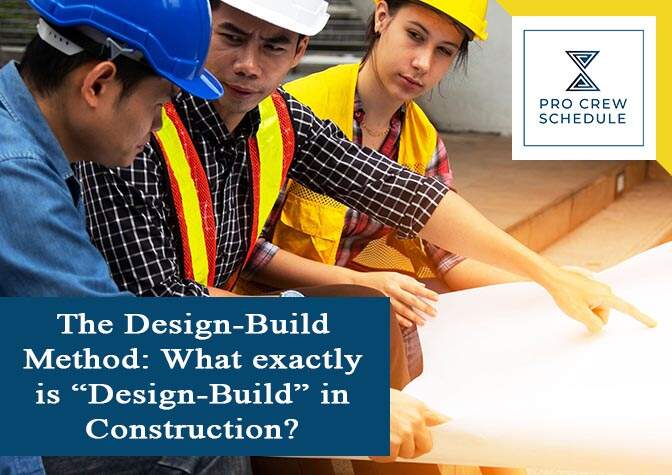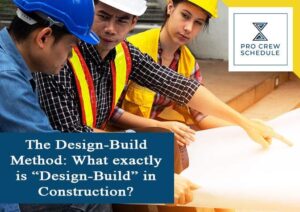On a typical construction project, exploring the many layers of management is proven to be very challenging for everyone involved. Complex oversight makes it very hard for the property owner and project manager and other people in charge to collaborate and communicate with one another. The extra layers of management placed at the top will make it much more difficult for suppliers and subcontractors to get paid.
When you envision a construction environment that maximizes productivity and fosters positive relationships, what seems more fitting? Is it: (1) Protective measures, secretive attitudes, mistrust, proprietary turf wars and grudging communication where needed – if at all? (2) Respect for others, open minds, friendly sharing of processes and ideas, responsibility-taking and ongoing communication being geared toward overall project success?
If you guessed the very first one, we could assume two certain things. First, you’ve been in the construction industry for too long. Second, you may not consider giving new project delivery methods such as design-build enough credit. But in this overview of the design-build process, we’ll show you how this significant common method of construction project delivery can help simplify the many processes in construction.
What is Design-Build Construction?
Design-build (DB) construction is a project delivery method where the owner signs a contract that comprehensively covers all construction phases and design aspects. The main intention is to eliminate the complication of multiple contractors of the client/owner. It is also a way to realize time savings and costs by reducing paperwork, streamlining responsibilities and tasks, and just merely allowing work that will otherwise be sequential to be finished simultaneously.
Moreover, Design-Build is one of the most advanced methods of project delivery today. It is quickly becoming the industry standard. If you are looking for faster yet efficient project completion times, a better brand overall, reliable budget estimates, it is the right time to consider embracing the Design-Build process.
- This project delivery method uses one contract, such as the AIA 141, for all design aspects and construction phases of a particular project, thus, creating one responsible participating party.
- This particular method promotes efficiency by removing layers of unnecessary processes and bureaucracy from the process.
- Design-Build often involves the subcontractors specifically in the design portion. All the work will be familiar to them and they will be informed right away before they even arrive at the job site.
Design-Build Management Structures
The Design-build (DB) process generally fuses both architects and engineers (A/E) and builders into one entity. The actual structure of that entity, including the relation of builders and designers, can take several forms. That is why it is vital to implement construction crew management to supervise every participating crew member better. Below is the relationship between the contractor and A/E.
- Architects and Engineers as an employee – in the design-build model, the majority of design staff (engineers, architects, interior designers, etc.) are employed directly by a general contractor.
- Architects and Engineers as a subcontractor – in this particular version, a contractor has the primary contract with the client/owner. The contractor will hire the A/E team as subs.
- Joint venture – In this type of arrangement, the A/E firm and the contractor establish a joint venture (a one combined company) to carry out the work as partners. One of the project managers’ duties is to monitor everyone involved in the venture.
But how does the design-build approach differ from traditional models? It is a question commonly asked by many. But in direct opposition to the approach, design-build is a standard method of project delivery wherein there’s only one entity, one unified flow of work and one contract from the initial concept for the entire completion. DB is highly known as a single-source responsibility with all crews involved.
Single-source contracting is one significant difference between DB and the old traditional ways. However, the culture of collaboration still matters whether it is a conventional model or a Design-build approach. The culture of transparency is a huge help in fixing misunderstandings and preventing mistake-making and blame-shifting, which cause unnecessary expenses down the road.
The Many Benefits of Design-Build
Design-build yields several benefits to the project site, on your entire team, your client and the final product.
1. Increase Project Speed
Your client regularly pinpoints “delivery schedule” as an essential factor of the project delivery method selection, which then explains why the DB approach is immediately overtaking its traditional cousin. The owners prefer to have the work done on time: the faster, the better. In conventional design-bid-build, a huge amount of time is consumed by the bidding process, including managing and creating multiple contracts for every entity/aspect involved.
But with Design-Build, there is no bidding process taken into consideration. Additionally, the construction is shorter in the DB approach since all architects, builders and engineers are on one team. Hence, building on one portion of the project may begin while the A/E are currently nailing down the other part’s details.
2. Reduced Costs
Apparently, initial costs are always a fundamental factor when it comes to project delivery selection. Good thing that Design-Build has an overall project budget already established at the start of the project. Generally, a tight implementation budget or GMP (guaranteed maximum price) and a fixed design fee are always included in this part. Planning an accurate set of the budget at the start of construction will further eliminate last-minute surprises.
A study shows that alternative project delivery methods may provide a much greater opportunity of meeting the initial budget compare to Design-bid-build. While the DB approach may look like more money upfront, the cost savings can be significantly greater compared to other delivery methods in the long run.
3. More Team Collaboration = Less Mistakes and Risks
Due to Design-build’s nature, everybody is working for one particular project goal. It is a firm tendency for separate teams and trades to work on what’s in their best interest with traditional ways. It might difficult to blame the setup since the independent contract model will make it harder to work the other way. The research is particularly about traditional methods like design-bid-build, leading to miscommunication between teams, disconnection, and many potential errors.
The DB approach’s collaborative process uses and encourages solid teamwork, stimulates information sharing, develops deeper levels of collaboration and trust, enhances transparent communication between crew members, and improves the whole project quality. Hence, project completion isn’t put at risk. The design-build approach combined with task management software like Pro Crew Schedule will make the entire work easier.
With Pro Crew Schedule, a more collaborative space exist and there’s greater accountability in many ways:
- Project planning sets to be realistic, helping to shape a more accurate timeline.
- Tracking time hours is one of the top features of this software.
- This subcontractor scheduling software serves as a centralized channel for all your members and other subs involved.
- Files and data are stored securely and can be accessed anytime and anywhere.
- The application is easy to explore, and so as the built-in features.
- Workflow becomes smoother and there’s closer connection in all crews involved.
- Project management for construction is continuously improving.
There are several more emerging benefits of this cloud-based application when combined with the design-build model. If there is an opportunity for your company to start deploying this advanced application as you implement the DB model to your current projects, consider getting the basics first. Experience Pro Crew Schedule in a live demo for FREE!
4. Direct payment
By simply streamlining the payment procedure and keeping all payment requests and approvals on one roof, payment can be consistent and quick on DB projects. Thus, reducing disputes and delays overpayment, with the hope to minimize the need for mechanics liens.
The design-build approach also creates fewer disagreements on average compare to the design-bid-build. In fact, a study shows that from the year 1995-2004, only 1.4% of claims against A/E firms have been made by DB contractors.
5. Better solutions plus better value
In Design-Build, it is not necessary to limit solutions and suggestions for traditional ideas. In actuality, the job is the main boos. Hence, teams can only be limited by what is right for the job. As many ideas come to the table, the team can work as one unit to further analyze every aspect of it. With full transparency, the owners are guaranteed of getting the best materials, design, siting schedule and more.
This innovative process will make it possible for you and the owners to make better-informed decisions, see more options and realize a much better value.
Take Minor Steps Towards Design-Build Approach Today!
Design-build isn’t going away. Instead, it only grows in popularity. If your firm is new to the Design-Build approach, make time to excel and master in a new process. If you can do it successfully, any of your projects can benefit from it enormously. Ultimately, design-build is always the answer for every construction project. However, it is wise and practical to ask some questions listed below:
- Are the expected time and cost savings worth the extra attention is required by the owner?
- Does the project require specific design considerations and expertise that might only be available from a specific specialty design firm?
- Is the building type well-suited to try construction methods and designs?
Similarly, suppliers and contractors considering a DB contract may want to review the other involved members’ previous performance. At the end of the day, perhaps the most crucial question to ask is, “Does your business had a history of show payment or mechanics liens on the record?” For the many projects where design-build is well-suited, it reduces construction claims and even payment disputes.
Key Takeaways
The design-build approach utilizes win-win solutions, including areas with the best balance of function, cost, efficiency, delivery and maintainability for a specific project. In today’s very competitive construction market, there are numerous project delivery methodologies to apply. However, tailoring your selection to your client’s project specifications and situations will help ensure success. The method of choice for several owners is the Design-Build approach.







